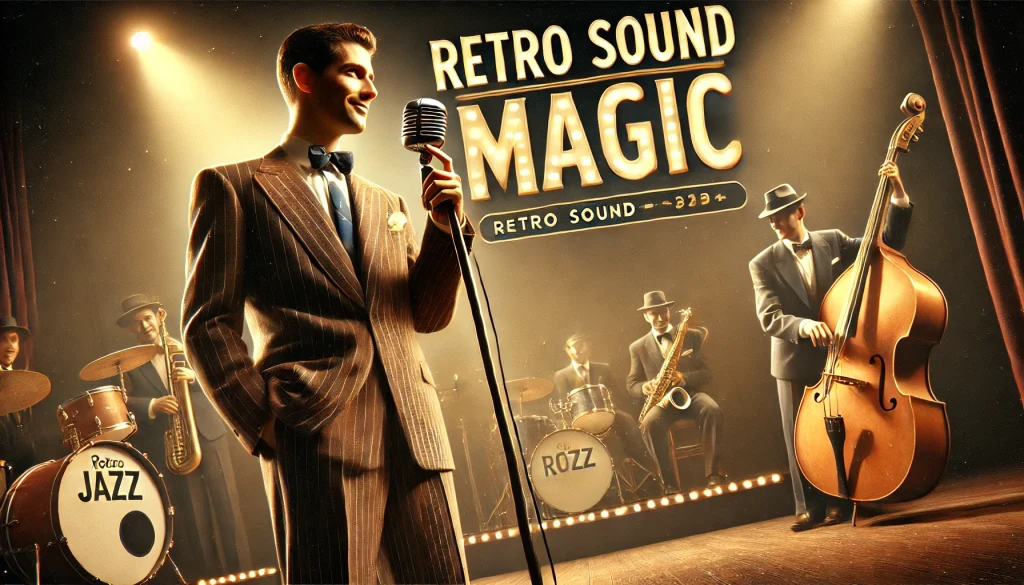In an age dominated by instant access to music of every genre, generation, and style, Postmodern Jukebox (PMJ) has tapped into something timeless: nostalgia. Founded by jazz pianist and arranger Scott Bradlee in 2010, PMJ reimagines contemporary pop hits in vintage styles like jazz, swing, ragtime, and doo-wop. For over a decade, the musical collective has built a global following by bridging the sounds of the past with the songs of today, drawing in fans from every age group. But why does this retro sound resonate so deeply across generations? The answer lies in the powerful role of nostalgia and the universal appeal of classic music.
The Nostalgia Factor: Why We’re Drawn to the Past
Nostalgia is often described as a sentimental longing for the past, but it’s more than just an emotional indulgence. Psychological research has shown that nostalgia can have a profound impact on mental well-being, creating feelings of comfort, stability, and happiness. A study published in the journal Memory found that recalling positive memories from the past can improve mood, reduce stress, and help people feel more connected to others. This connection is crucial to PMJ’s appeal: by presenting contemporary songs through a nostalgic lens, they allow listeners to experience a comforting familiarity – even with a song they may not have heard before, played in a style that was popular long before their birth.
For many, PMJ’s music serves as a bridge to different eras, evoking the elegance of a 1920s speakeasy or the soulful swing of a 1950s dance hall. PMJ’s arrangements take audiences back to simpler times, where big bands ruled and jazz filled dance floors. This appeal is particularly strong in an age where rapid technological advancements and constant change can feel overwhelming. PMJ’s music offers a break from the present and a glimpse into a world many never lived through but feel an innate connection to.
Bridging Generational Gaps
One of the reasons PMJ appeals to such a wide age range is its ability to bridge generational gaps. For older audiences, PMJ brings cherished memories of vintage music styles back to life, while for younger listeners, the vintage arrangements offer a new way to experience songs they already love. A PMJ cover of a modern pop song — think the Spice Girl’s “Wannabe,” transformed into a swinging Andrews Sisters record – can make younger listeners curious about jazz and other earlier styles of music, while older fans are delighted to hear the familiar genres they loved in their youth. This cross-generational appeal turns PMJ concerts and videos into shared experiences for families and friends of all ages.
PMJ’s success with multigenerational audiences is reflected in the demographics of their live shows, where it’s common to see parents, children, and even grandparents attending together. It’s an experience that resonates across generation, allowing elders to share the music of their youth in a way that younger listeners can connect with, and vice versa.
Reinventing the Familiar
Much of PMJ’s appeal stems from its unique ability to take something familiar and give it a new twist. By placing a pop hit in a vintage context, PMJ creates a sense of familiarity but also introduces an element of surprise. When Beyoncé’s “Halo” is transformed into a soulful, 1960s-inspired Motown ballad, or Guns N’ Roses’ “Sweet Child O’ Mine” becomes a bluesy, Bessie Smith style New Orleans tune, listeners experience a new interpretation of something they already know. This twist allows the music to feel both fresh and nostalgic, a combination that’s hard to resist.
Studies in consumer psychology show that people are drawn to products that blend familiarity with novelty. This phenomenon, known as the “mere exposure effect,” suggests that people enjoy things that are new yet contain elements they recognize. PMJ’s music embodies this blend by reworking songs with a vintage twist, creating a sound that is simultaneously nostalgic and novel.
The Universal Language of Classic Music
While nostalgia may initially draw listeners to PMJ, it’s the universal language of music that keeps them coming back. Genres like jazz, swing, and big band have a timeless quality, characterized by their lively rhythms, sophisticated harmonies, and soul-stirring melodies. These elements transcend cultural and generational boundaries, making them accessible to people of all ages.
For younger listeners, PMJ serves as a gateway to musical genres they may not have encountered otherwise. Jazz and swing are no longer mainstream, but PMJ’s reinterpretations offer younger audiences an entry point to experience these styles, without needing a prior connection to them. For older listeners, PMJ’s music recalls a time when these genres were at the forefront of American culture, when live big band performances were a staple of social gatherings, radio hits, and popular variety shows. This sense of universality and timelessness allows PMJ’s music to resonate with listeners regardless of age.
The Role of Social Media in Building Nostalgic Appeal
Social media has played a crucial role in amplifying PMJ’s nostalgic appeal. Their YouTube channel, where many fans first discovered PMJ, has millions of subscribers and has brought retro styles to a global audience. Each video is a visual as well as auditory experience, with costumes, set designs, and filming techniques that transport viewers to another era. This visual aesthetic helps immerse viewers in the nostalgic experience, making PMJ’s covers more than just songs—they’re moments frozen in time.
Instagram and TikTok have also been vital in connecting PMJ with new fans. On Instagram, they share vintage-inspired photos, Art Deco-style tour posters, and short video clips that showcase the glamour and elegance of each performance. TikTok, with its short-form content, has allowed PMJ to reach younger audiences through bite-sized renditions of their covers, bringing jazz and swing sounds to a platform primarily dominated by modern pop and dance music. Social media allows PMJ to create an immersive, nostalgic world for fans to step into, making the experience of listening to their music a communal, shared journey.
A Reprieve from a Fast-Paced World
At its core, PMJ’s success is rooted in the timeless appeal of nostalgia. In an era where technology moves faster than ever, the longing for a simpler, slower time is palpable. PMJ’s music provides a reprieve from the breakneck pace of modern life, offering a glimpse into the past through music. Fans are transported to a time when music wasn’t just background noise, but a carefully crafted experience to be savored. PMJ’s arrangements and videos continue this legacy of craftsmanship, by offering sophistication and musical depth to contemporary chart-toppers.
A Musical Time Machine
Postmodern Jukebox has tapped into the universal longing for the past, crafting a sound that brings the elegance and simplicity of vintage music into the present. Whether it’s through a jazz version of a contemporary hit or a swing rendition of a pop anthem, PMJ’s music resonates with listeners of all ages by combining the comfort of nostalgia with the excitement of discovery. In a world where the past and present often collide, PMJ’s music stands as a reminder that great songs—and great memories—are timeless.

